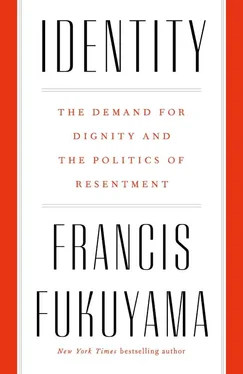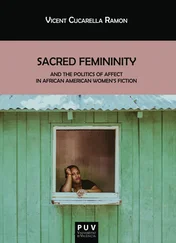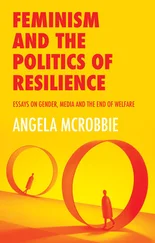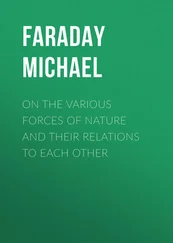Dual citizenship has become increasingly widespread today as migration levels have increased. For many people who travel or have family in different countries, having multiple passports is a great convenience. But if one takes national identity seriously, it is a rather questionable practice. Different nations have different identities and different interests that can engender potentially conflicting allegiances. The most obvious problem involves military service: if the two countries of which one is a citizen go to war with each other, one’s loyalties are automatically in question. This may seem a moot issue with the reduced likelihood of war in most of the world, but we unfortunately cannot assume that military conflict will not occur in the future. Even short of such contingencies, dual citizenship raises serious political problems. In Germany’s 2017 election, for example, Turkey’s authoritarian president, Recep Tayyip Erdoğan, encouraged German citizens of Turkish origin to vote for politicians who would favor Turkish interests, rather than voting for those they thought were best for Germany. Those who were citizens of both countries might have a harder time deciding how to vote than those who had forsworn loyalty to Turkey. {2}
In addition to changing the formal requirements for citizenship, European countries need to shift their popular understandings of national identity away from those based on ethnicity. In the early 2000s, a German academic of Syrian origin named Bassam Tibi proposed Leitkultur , “leading culture,” as the basis for German national identity. {3} Leitkultur was defined in liberal Enlightenment terms as belief in equality and democratic values. Yet his proposal was attacked from the left for suggesting that those values were superior to other cultural values; in doing so the left gave unwitting comfort not just to Islamists, but also to the right that still believed in ethnic identity. Germany needs something precisely like Leitkultur , a normative change that would permit a Turk to speak of him- or herself as German. This is beginning to happen, but slowly. {4}
Down the road, something like a pan-European identity may someday emerge. Perhaps this needs to happen outside the cumbersome and bureaucratic decision-making structures that constitute the contemporary EU. Europeans have created a remarkable civilization of which they should be proud, one that can encompass people from other cultures even as it remains aware of the distinctiveness of its own.
Compared to Europe, the United States has been far more welcoming of immigrants because it developed a creedal identity early on, based on its long history of immigration. Compared to Europeans, Americans have been proud of their naturalized citizens and typically make a great deal out of the naturalization ceremony, with color guards and hopeful speeches by local politicians. As the political scientist Seymour Martin Lipset used to point out, in the United States one can be accused of being “un-American” in a way that one could not be said to be “un-Danish” or “un-Japanese.” Americanism constituted a set of beliefs and a way of life, not an ethnicity; one can deviate from the former but not the latter.
The creedal national identity that emerged in the wake of the American Civil War today needs to be strongly reemphasized and defended from attacks by both the left and the right. On the right, plenty of new white nationalist voices would like to drag the country backward to an identity once again based on race, ethnicity, or religion. It is urgent that these views be firmly rejected as un-American, much as Ben Sasse sought to do.
On the left, identity politics has sought to undermine the legitimacy of the American national story by emphasizing victimization, insinuating in some cases that racism, gender discrimination, and other forms of systematic exclusion are somehow intrinsic to the country’s DNA. All these things have been and continue to be features of American society, and they need to be confronted in the present. But a progressive narrative can also be told about the overcoming of barriers and the ever-broadening circles of people whose dignity the country has recognized, based on its founding principles. This narrative was part of the “new birth of freedom” envisioned by Abraham Lincoln, and one that Americans celebrate on the holiday he created, Thanksgiving.
While the United States has benefited from diversity, it cannot build its national identity around diversity as such. Identity has to be related to substantive ideas such as constitutionalism, rule of law, and human equality. Americans respect these ideas; the country is justified in excluding from citizenship those who reject them.
Once a country has defined a proper creedal identity that is open to the de facto diversity of modern societies, the nature of controversies over immigration will inevitably have to change. In both Europe and the United States, that debate is currently polarized between a right that seeks to cut off immigration altogether and would like to send current immigrants back to their countries of origin and a left that asserts a virtually unlimited obligation on the part of liberal democracies to accept migrants. The real focus should instead be on strategies for better assimilating immigrants to a country’s creedal identity. Well-assimilated immigrants bring a healthy diversity to any society, and the benefits of immigration can be fully realized. Poorly assimilated immigrants are a drag on the state and in some cases constitute dangerous security threats.
Europeans pay lip service to the need for better assimilation, but fail to follow through with an effective set of policies. The reform agenda here is highly varied since individual European countries approach the problem very differently. Many countries have in place policies that actively impede integration, such as the Dutch system of pillarization. Britain and a number of other European countries provide public funding for Muslim schools, just as they support Christian and Jewish schools. To some extent this simply reflects the geographical concentration of immigrant communities, and was done in the name of equal treatment. If assimilation is the goal, however, this whole structure should be replaced by a system of common schools teaching a standardized curriculum. As in the Netherlands, it is a reach to think that this would be politically feasible, yet that is the kind of approach that would be needed were countries to take integration seriously. {5}
In France, the problem is somewhat different. The French concept of republican citizenship, like its American counterpart, is creedal, built around the ideals of liberty, equality, and fraternity coming out of the French Revolution. The 1905 law on laïcité formally separates church and state and makes impossible the kinds of publicly funded religious schools operating in Britain or the Netherlands. {6} The French problem is threefold. First, whatever French law says, a lot of discrimination in French society remains, which holds back opportunities from immigrants. Second, the French economy has been underperforming for years, leading to overall unemployment rates that are twice those of neighboring Germany. For France’s immigrant youth, the numbers are reaching 35 percent, compared to 25 for French youth as a whole. One important thing that France needs to do to integrate immigrants is to get them jobs and increase their hope for a better future, for instance by liberalizing the labor market, as Emmanuel Macron has sought to do. Finally, the very idea of French national identity and French culture has been under attack as Islamophobic; assimilation itself is not politically acceptable to many on the left. Defense of republican ideals of universal citizenship should not be left to parties like the National Front.
Читать дальше












